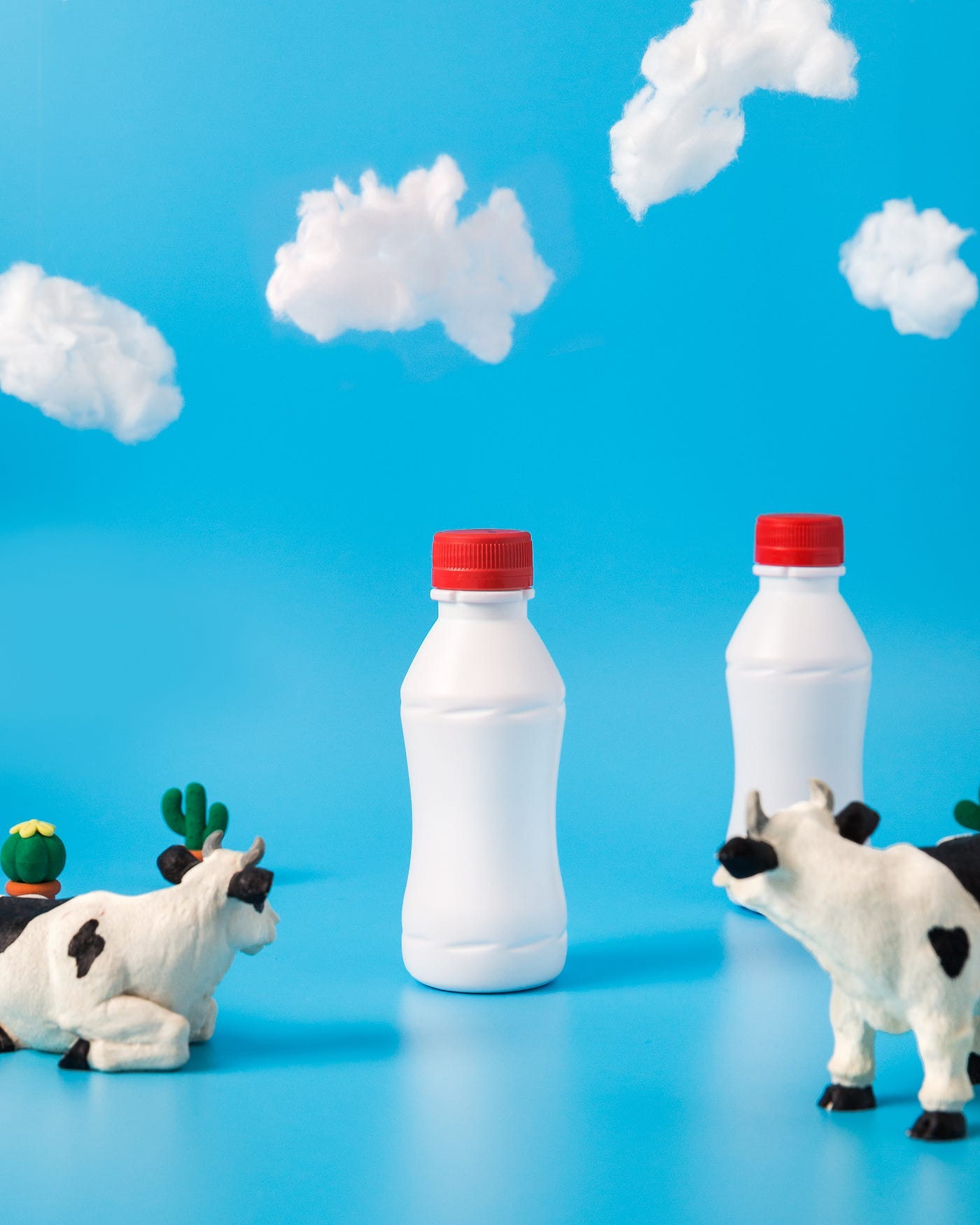Hello beloved patients, friends, and colleagues,
Happy March! This week holds a lot of anniversary’s in my life.
Three years ago, the world started to shut down for what we thought was going to be only a few weeks. My last full day of patients in my old office was March 17, 2020. Two years ago, on March 15, 2021, I began production on a television series as the head of the the Covid Compliance Department. One year ago, on March 8, 2022, I reopened my practice in our new location.
It’s hard to believe so much has happened in such a short amount of time. Through all the twists and turns, I’m so grateful to have been able to stay in touch with so many of you.
In this month’s newsletter, I’ve included two articles. After recently learning about lab-based dairy substitutes, I thought it would be fun to share an article I wrote about why so many people are lactose intolerant. Also, in honor of all the spring openings on Broadway, I’m sharing a short article about how the voice works.
Happy Spring! Here’s to seeing what’s up ahead in the next year!
Love,
Dr. Dahl
In ENT News:
Why Are So Many People Lactose Intolerant?
Humans are the only mammals who eat dairy into adulthood.
When I was a junior in college, I thought I’d developed an ulcer. I would get gnawing gut pains, sometimes accompanied by burping or bloating. I looked up the symptoms in a textbook (there was no internet in those days), and all signs pointed to acid reflux. It made sense, what with all the stress I was dealing with in my pre-med classes and work-study. I could almost feel the acid burning a hole through my stomach.
The remedy, I had read, was to eat a lot of dairy. It was thought to “neutralize” acid. That sounded great to me. My favorite meal was ice cream. On really bad nights, I would scarf down an oversized chocolate peanut butter cone in place of dinner and try to convince myself I felt better. To my surprise, my symptoms got worse. I even started getting diarrhea. And the gas–so noxious it would have knocked out Arnold Schwarzenegger. (Terminator 2 was super popular back then.)
One day, I asked the medical student in my research lab what she thought.
“Lactose intolerance,” she diagnosed, confidently.
“What’s the treatment?” I asked.
In the days before Lactaid, her answer was funereal. “Stop eating dairy.”
She may as well have told me to stop eating everything. As a midwestern girl, my entire diet was coated in cream. How would I survive?
I’m sure you’ve heard of lactose intolerance. It’s a condition where you lack the enzyme lactase, which breaks down lactose, the sugar found in dairy products, like milk, yogurt, cream, or cheese. Without this enzyme, undigested lactose passes into your colon where gas-producing bacteria devour it, letting off gas that causes the associated symptoms of bloating, flatulence, nausea, abdominal pain, and diarrhea. Not everyone with lactose intolerance has terrible symptoms, but some (like yours truly) really suffer.
Interestingly, nearly all newborn babies make loads of lactase when they are born. They need it to digest breast milk (or animal milk if breastfeeding doesn’t work out). But once they wean off the udder, lactase production goes way down. Quelle horreur, you may think. How are we supposed to eat frozen yogurt? The answer is we aren’t.
Humans are the only mammals that continue to drink milk after weaning. And we aren’t even drinking milk from our own species.
Before you bristle at the idea of cheeseless pizza, consider this. It has been estimated that 68% of the world’s population can’t digest lactose. That’s two-thirds of all the people in the world. There are regional variations, of course.
If you break down lactose intolerance by country, it looks like this:
The top ten countries with the highest prevalence of lactose intolerance are:
Ghana — 100%
Malawi — 100%
South Korea — 100%
Yemen — 100%
Solomon Islands — 99%
Armenia — 98%
Vietnam — 98%
Zambia — 98%
Azerbaijan — 96%
Oman — 96%
The top ten countries with the lowest prevalence of lactose intolerance are:
Denmark — 4%
Ireland — 4%
Sweden — 7%
United Kingdom — 8%
New Zealand — 10%
Netherlands — 12%
Norway — 12%
Niger — 13% (This African country was under French rule for 50 years)
Belgium — 15%
Cyprus — 16%
The top 10 countries that consume the most milk:
Finland
Sweden
Netherlands
Switzerland
Greece
Montenegro
Lithuania
Denmark
Albania
Romania
At first glance, it may seem that people in countries that don’t consume a lot of dairy lost the ability to digest it. But the converse is actually true. A relatively recent mutation in the LCT gene gave humans the ability to digest lactose into adulthood. The New York Times recently published an article showing that even early European farmers didn’t have lactase. They just tolerated the pain and stench of undigested dairy until they went through periods of drought and famine. Only people with persistent lactase were able to get nourishment from animal milk during those times. The ones that lived went on to make more people with the same uber-human ability. Those people moved to other lands and mixed with other people who also moved around and now a third of all people on the planet can enjoy a grilled cheese without any drama. Still, it’s only one-third of all people. Lactase persistence is the exception, not the rule.
It makes sense that I can’t digest lactose. My parents are from the Middle East. Maybe there’s nothing wrong with my bowels after all.

So why are we so obsessed with dairy?
In the U.S, where 36% of people are lactose intolerant, we are taught from an early age that dairy is one of the four basic food groups. (To be clear, dairy is anything that comes out of an udder and does not include eggs, which come from chickens, who don’t even have udders.) We are also told that dairy is a good source of calcium and Vitamin D. But most of those vitamins are added, just as they are to orange juice and nut milks. There is actually nearly as much calcium in a cup of spinach or figs as there is in a cup of milk. 1 oz of turkey has 8 grams of protein, the same as a cup of milk. And most forms of dairy are high in saturated fats and increase our cholesterol levels. They are also loaded with calories.
Have we been brainwashed into believing dairy is good for us even though it isn’t?
We sure have.
It all started in the early 1900s, along with industrialization and the temperance movement. Before then, only babies and children drank milk. Men drank beer and whiskey. It would have been bizarre to see a grown man down a glass of icy cold milk, especially if he lived in a city. Back then, milk was dangerous to consume far away from its source because pasteurization and refrigeration hadn’t been invented yet. But as doctors and health movements pushed toward the notion of food as medicine, milk made it to the top of the heap. This pleased dairy farmers, who were producing so much that they didn’t know what to do with it. (At one point it was used to make plastic in WWI airplanes).
Around 1920, in a perfect storm, the government, scientists, and farmers all came together to pronounce milk as the perfect food. That message has persisted despite evidence to the contrary. Female cows continue to be fed hormones and antibiotics so they can continue to lactate for our pleasure.
The next time you slice into a bubble of burrata, spoon the milky gelatin onto toasted bread and slide it into your impatient mouth, remember this: That milk is stolen. It’s not for you. It’s for baby cows.
In Broadway News:
How your voice works
We use our whole body to create our unique voice, but our voice is more than just the sum of its parts.
On Sunday, July 24th, Joni Mitchell took to the stage at the Newport Folk Festival. It was her first performance since 2015 when a nearly fatal aneurysm rendered her voiceless. Like many in the audience–and even those on stage–I wept as I listened. But it wasn’t just the words to her beautiful songs that moved me. It was hearing them in her voice, unfiltered and enriched by her personal experiences and emotions.
If you haven’t guessed, I’m a huge fan of voices. For nearly two decades I’ve taken care of countless singers from Broadway and TV to major recording artists and everyone in between. These singers all have one thing in common: their voice is their instrument, and they can’t do their job without it. The rest of us take it for granted.
Vocal production is a fascinating show of biomechanics.
Most people are familiar with vocal cords. They are two bands of muscle attached at the front and loosely covered by a mucosal membrane (see above). You may chuckle at their likeness to female parts, but the resemblance stops there. The cords are essentially a valve that protects your airway. They sit at the opening to the trachea to prevent anything from going into your lungs. They open to allow you to inhale and exhale, and close to protect your airway when you swallow or if something touches them (in which case you cough to clear it out of the way.)
The secondary purpose of vocal cords is to create our voice, but they don’t do it alone. They are merely the vibrator that starts the sound, much like the strings of a guitar. Eight pairs of outside or extrinsic muscles move the cords in different directions. When they are brought together–close enough but not too close–they vibrate against one another to produce sound. (Totally closing your vocal cords is how you “hold your breath”.) Stretching them tighter and longer produces high-pitched tones. Shortening and making them thicker produces low-pitched tones.
Once the vocal cords come together, they need a power source, and that power source is the lungs. When you push air out of your lungs the airflow makes the vocal cords vibrate. The stronger the airflow, the louder the sound. Imagine the lung capacity of an opera singer!
But pushing air past vocal cords doesn’t explain the unique way our voices sound. On their own, vibrating vocal cords make a buzzing sound, like the mouthpiece of a trumpet. Your voice comes out as your voice when that buzzing resonates through the structures above your cords, like your nose, mouth, and throat. Changing the shape of your mouth and the position of your tongue also allows you to produce speech, an ability unique to humans.
When I was in residency, I attended an interdisciplinary voice conference. Scientists with many different perspectives came together to try and mimic the human voice. Mechanical engineers created physical models with wood and silicone. Sound engineers morphed sound frequencies. Doctors performed anatomic dissections on cadavers. At the end of the conference, no one was able to replicate the sound of the human voice. Perhaps that’s because our voice is more than the sum of our parts. It’s also what makes us human.
If you’d like to read more of my articles, you can access my Medium page here. You can become a Medium member here.
To Make an Appointment:
EMAIL: info@drlindadahl.com
CALL 212-920-3047
We are available by phone Monday through Friday.
Office hours:
Tuesdays, Wednesdays, and Thursdays, 9 am to 5 pm
Office location:
535 5th Avenue, 32nd Floor, NY, NY 10017
(Entrance on 44th Street between Madison Ave and 5th Ave)





